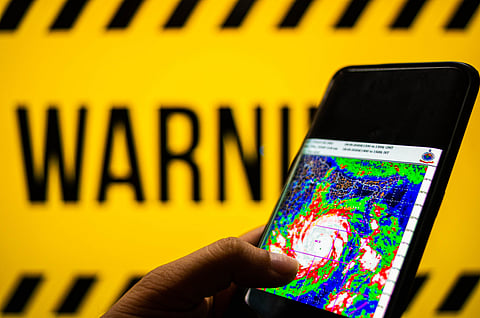
- Destinations
- Experiences
- Stay
- What's new
- Celebrating People
- Responsible Tourism
- CampaignsCampaigns
- Subscribe
- Buy Now

In response to a wave of misinformation surrounding “Cyclone Shakti,” the India Meteorological Department (IMD) has issued a clarification urging the public to remain calm and recognise the crucial distinction between cyclonic circulations and cyclonic storms.
The clarification follows the spread of unverified forecasts and social media posts falsely claiming the formation of a severe weather system. The IMD has categorically denied the existence of any such cyclone and cautioned against the dissemination of unverified information.
On May 19, many news outlets reported that the IMD had detected an upper-air cyclonic circulation over the Andaman Sea, which was likely to evolve into a low-pressure system between May 16 and 22. The reports further stated that the system could intensify into “Cyclone Shakti” between May 23 and 28, potentially affecting coastal regions of Odisha and West Bengal in India, along with Khulna and Chattogram in Bangladesh.
In a media interview on May 18, Habibur Rahman Biswas, head of the Forecast Centre at the Regional Meteorological Centre in Kolkata, explained that the confusion largely stems from misinterpreting meteorological terminology.
“Many people mistake any mention of the word ‘cyclonic’ as an imminent threat of a cyclone, which is not the case,” Biswas said.
He elaborated that cyclonic circulation refers to an upper-air phenomenon, where winds rotate in an anti-clockwise direction at altitudes ranging from 1.5 km to 7.6 km above the ground. “This is what we call cyclonic circulation. It has an influence on weather patterns, but doesn’t necessarily lead to a cyclone or have any severe impact on the ground,” he said.
“A cyclonic circulation is circulation of air at higher altitudes—generally not harmful, while a cyclonic storm is a surface-level, intense low-pressure system with high winds and potentially damaging effects. The misuse or misunderstanding of these terms can create unnecessary panic,” Biswas added.
Emphasising the importance of relying on official sources, Biswas confirmed that “as of now, the IMD has issued no cyclone warnings.” He assured that any indications of cyclone development would be formally communicated through official bulletins.
According to the IMD, the southwest monsoon has advanced into parts of the Bay of Bengal, the south Andaman Sea, the Nicobar Islands and sections of the north Andaman Sea as of May 13. This early onset is the earliest recorded in the past seven years.
The department has also forecast rain in many parts of the country due to other upper-air circulations. Delhi, Punjab, Haryana, east Rajasthan, and Himachal Pradesh may experience light to moderate rainfall accompanied by thunderstorms and gusty winds.
Mumbai and Gujarat will also experience light to moderate rainfall accompanied by gusty winds. Southern and central states like Karnataka, Tamil Nadu, Kerala and Chhattisgarh are also likely to see pre-monsoon showers.
Residents in these areas should stay alert, follow weather updates closely and heed local authority advice to remain safe. If you plan to travel during this period, here's what you should keep in mind:
Check Flight And Train Updates: Delays and cancellations are common during bad weather. Always confirm your travel plans before departure.
Carry Essentials: When travelling through rural or flood-prone areas, carry drinking water, snacks, a power bank and any necessary medicines.
Book Flexible Tickets: Choose tickets that allow free cancellation or rescheduling in case your plans are disrupted.
Follow Weather Updates: Check the IMD website, weather apps and local news regularly.
(With inputs from multiple news reports)
